Har Gerizim and Har Eival were two mountains in Eretz Yisrael that figure prominently in this week’s parshah. These were the mountains upon which the blessings and curses were to be pronounced. As the Torah records: אֵלֶּה יַעַמְדוּ לְבָרֵךְ אֶת־הָעָם עַל־הַר גְּרִזִּים בְּעָבְרְכֶם אֶת־הַיַּרְדֵּן… וְאֵלֶּה יַעַמְדוּ עַל־הַקְּלָלָה בְּהַר עֵיבָל… – “The following (tribes) shall stand on Mt. Gerizim to bless the nation when you cross the Yarden River… And the following shall stand for the curses on Mt. Eival…” (Devarim 27:12).
Unlikely Locations
Also particular to this area was the erection of the stones upon which the words of the Torah were inscribed. This took place following the deliverance of the blessings and curses, as delineated in the Mishnah (Sotah 7:5):
כֵּיוָן שֶׁעָבְרוּ יִשְׂרָאֵל אֶת הַיַּרְדֵּן וּבָאוּ אֶל הַר גְּרִיזִּים וְאֶל הַר עֵיבָל… שִׁשָּׁה שְׁבָטִים עָלוּ לְרֹאשׁ הַר גְּרִזִּים וְשִׁשָּׁה שְׁבָטִים עָלוּ לְרֹאשׁ הַר עֵיבָל, וְהַכֹּהֲנִים וְהַלְוִיִּם וְהָאָרוֹן עוֹמְדִים לְמַטָּה בָאֶמְצַע… הָפְכוּ פְנֵיהֶם כְּלַפֵּי הַר גְּרִזִּים וּפָתְחוּ בַבְּרָכָה, בָּרוּךְ הָאִישׁ אֲשֶׁר לֹא יַעֲשֶׂה פֶסֶל וּמַסֵּכָה… הָפְכוּ פְנֵיהֶם כְּלַפֵּי הַר עֵיבָל וּפָתְחוּ בַקְּלָלָה אָרוּר הָאִישׁ אֲשֶׁר יַעֲשֶׂה פֶסֶל וּמַסֵּכָה… עַד שֶׁגּוֹמְרִין בְּרָכוֹת וּקְלָלוֹת. וְאַחַר כָּךְ הֵבִיאוּ אֶת הָאֲבָנִים וּבָנוּ אֶת הַמִּזְבֵּחַ וְסָדוּהוּ בַּסִּיד, וְכָתְבוּ עָלָיו אֶת כָּל דִּבְרֵי הַתּוֹרָה בְּשִׁבְעִים לָשׁוֹן, שֶׁנֶּאֱמַר (שם) בַּאֵר הֵיטֵב.
“Once Yisrael crossed over the Yarden and arrived at Har Gerizim and Har Eival… Six tribes ascended to the summit of Har Gerizim, and six tribes ascended to the summit of Har Eival, with the Kohanim, Levi’im, and the (Holy) Ark standing below in the middle… They turned their faces toward Har Gerizim and opened with the blessing: ‘Blessed is the man who has made no idol or molten image’… They then turned their faces toward Har Eival and opened with the curse: ‘Cursed is the man who has made an idol or molten image’ (Devarim 27:15).. (The ceremony thus continued) until they completed the (recitation of all the) blessings and curses. Afterward, they brought the stones, erected the altar, applied plaster and wrote upon it all the words of the Torah in seventy languages, as it states (ibid. v. 8): ‘(And you shall inscribe on the stones all the words of this Torah) with great clarity.’”
It is the precise location of this latter aspect that presents a bit of puzzlement, however. Dealing as we are with the presentation of the Torah, one would have expected that this would take place on Har Gerizim, the mountain designated for blessing. Alas, Rashi (Sotah 35b) informs us that the opposite is the case, as the stones were actually erected on Har Eival. Why, indeed, was the presentation of the Torah relegated to the mountain of curses?
Seemingly compounding the issue is the fact that there was another instance of inscribing the Torah on stones, this one occurring prior to the deliverance of the blessings and curses on the mountains. Here, again, the location chosen for this event is quite noteworthy; according to the Malbim (Devarim 27:3), it actually took place while Yisrael was in the middle of crossing the Yardein! Now, as R’ Meir Tzvi Bergman (son-in-law of R’ Shach) points out, they were at this moment in quite a precarious situation. The waters, of course, had split, allowing the nation to traverse the dry riverbed. Nonetheless, the Gemara relates (Sotah 34a) that the wall formed by the parted waters was continually on the rise, eventually reaching a height upwards of 200 miles! Thus, it was with this looming threat of an imminent collapse of the waters that Yisrael was tasked with inscribing the Torah on the stones.
To sum up, then, we have two instances – on either side of the deliverance of the blessings and curses – during which Yisrael was to involve themselves in inscribing the Torah. One of these took place under the shadow of a mounting wall of water, the other on the mountain designated for delivering curses. What could account for such choices of venue, whereby the Torah was transmitted under such dark and difficult conditions?
Torah under Duress
R’ Bergman understands that a vital lesson is being imparted here regarding Torah acquisition. Of course, one should not specifically seek out trying circumstances under which to study and master Torah. The message of the parshah, however, is that one should certainly not abandon the effort should such circumstances arise. On the contrary – one who learns Torah under duress may attain more success than he would have under more tranquil conditions. Shlomo Hamelech declares: אַף חָכְמָתִי עָמְדָה לִּי – “Even my wisdom has stood by me” (Koheles 2:9). The Rambam expounds this statement as relating to Torah learned under conditions of “af,” which could refer also to tribulation: חָכְמָה שֶׁלָמַדְתִּי בְּאַף הִיא עָמְדָה לִּי – “It is wisdom I studied during (periods of) ‘af’ that has stood by me” (Hilchos Talmud Torah 3:12).
This idea is dramatically illustrated by an incident involving the Shach, one of the most venerated halachic commentators of all time. As is well known, he endured the persecutions of “Tach v’Tat” (taking place in the years ת”ח ות”ט – 5408–09 [1648-49]), one of the few to escape the Cossacks’ sword. In fact, the Shach includes in one of his response a remark that it was written while fleeing the marauders.
Apparently, the story behind that comment involved the Shach’s rebbi, the legendery R’ Heshel. R’ Heshel had been travelling in a wagon, and his disciple, traversing on foot alongside, asked the sage to look over the responsa he had just penned. In the middle of his perusal, however, the call suddenly came forth that the Cossacks had been spotted and were on their way.
Responding to the alarm, the party immediately set off. As there was no room in the wagon for the Shach, he continued on foot behind the wagon. And this was the scene. R’ Heshel continued to study the words of Torah of his beloved disciple, with the Shach eagerly awaiting his master’s approbation. All the while, they hurried along to reach safety.
Finally, with the urgency of the moment mounting, R’ Heshel completed his review, noted his approval to the Shach, tossed the paper back to his disciple – and the rest is history (Sha’arei Orah, parshas Nasso).







